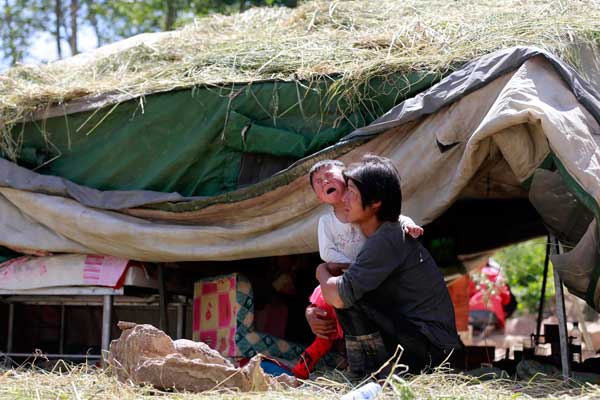Regions and cities
Pingliang city
Updated: 2013-10-18( travelchinaguide.com )
Name: Pingliang city
Population: 2,330,000
Area: 11,325 square kilometers (4,373 square miles)
Ethnic groups: Han
Administrative Division: 1 district (Kongtong); 6 counties (Jingchuan, Lingtai, Chongxin, Huating, Zhuanglang, Jingning)
Seat of the City Government: No 141, West Street, Kongtong district
Useful Telephone Numbers: Tourist Complaints: 0933-4161376 Weather Forecast: 121 Zip Code Inquiry: 184
Bank of China Pingliang Branch: No 17, West Street, Kongtong district
China Post Pingliang Branch: No 43, Kongtong Road (East), Kongtong district
Overview: Situated in east Gansu province, Pingliang is an important town on the Silk Road covering an area of 11,000 square kilometers. Its altitude ranges from 890-2,857 meters, annual average temperature is 9.2 C, and annual rainfall is 524.7 millimeters. Pingliang has a population of 2.33 million people and more than 20 ethnic groups.
History: It was one of the headstreams of Chinese civilization that was inhabited by human ancestors 200-300 thousand years ago. As early as 3,000 years ago, cultivation culture had been created in this area. In the year of 358, the name of Pingliang was first used for a shire.
Physical Features: The city is located in the hill and ravine region on Loess Plateau having rivers, valleys, mountains, plains and tablelands. Decumbence of the Liupan Mountain parts the city into the east dry and mountainous region and the east ravine area within the drainage area of the Jinghe River.
Resources: Pingliang is Gansu’s important production base of agriculture and forest products as well as animal husbandry and industrial crops. It has an abundance of wheat, corn, cereal, buckwheat, oilseed rape, flax and flue-cured tobacco. Pingliang, together with Qingyang, was once known as the granary of east Gansu province because it was a base for animal husbandry, a distribution center for fur and feathers, and an important production area of traditional Chinese medicine in Northwest China.
Pingliang has a national forest park and five provincial forest parks. It covers a total area of 61,690 hectares. It has 37,920 hectares of natural forest and 251,460 hectares of planted forest with a forest coverage rate of 27.74 percent. There are 254 kinds of plants and 31 kinds of animals in Pingliang.
Pingliang is rich in coal and limestone. The Huting coal field is the biggest in Gansu province with a total area of 150 square kilometers; the average thickness of its coal seam is 28.7 meters, and total proven reserves measure 3.47 billion tons.
Pingliang has unearthed 465 cultural relics from different dynasties, including 25 sites protected at or above the provincial level. Its historic relics, including Kongtong Mountain (the first mountain of Taoism), Queen Mother Palace, the birthplace of the Queen Mother of the West (a goddess in Taoism) and the birthplace of Fuxi (believed to be the first ancestor of humans), are well-known in China. Pingliang was one of the first batch of national 5A tourist scenic areas.
Economy: The city's total output value in 2011 reached 27.62 billion yuan ($4.46 billion), an increase of 14 percent from the previous year. The primary industry has achieved an added value of 5.7 billion yuan, an increase of 6.6 percent year-on-year. The secondary industry has reached an added value 13.34 billion yuan, an increase of 18.3 percent year-on-year. The service industry has achieved an added value 8.58 billion yuan, an increase of 12.6 percent year-on-year.
Social undertaking:
Pingliang had 28 national and provincial scientific-technological projects in 2011 with an investment of 11.76 million yuan. It had six municipal scientific-technological projects with an investment of 1 million yuan. Pingliang had 1,614 schools, eight performance groups, eight public libraries and eight museums. It had 2,700 public healthcare and medical institutions by the end of 2011 with 8,481 health staff.


